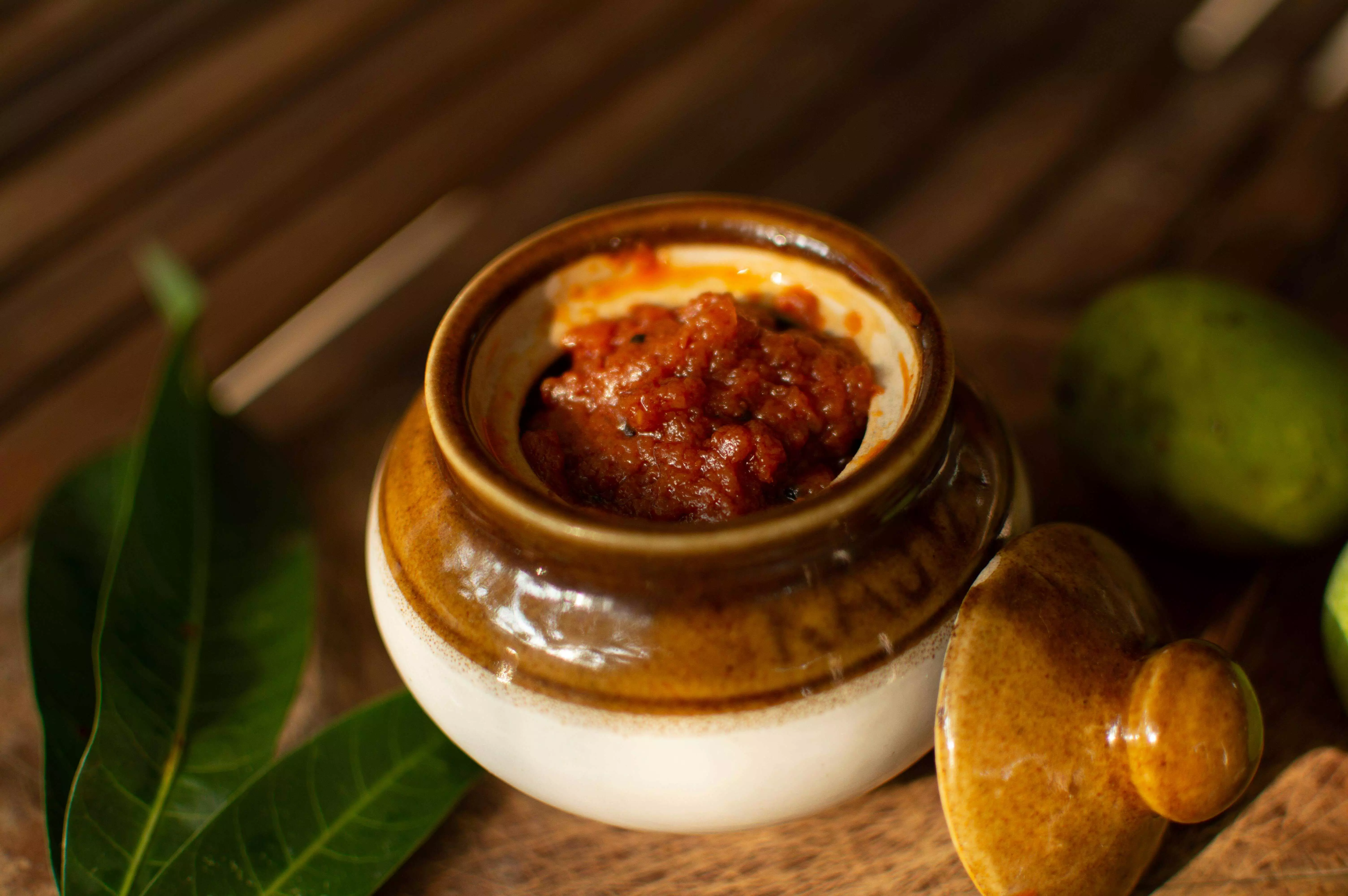'Avakaya': Come summer, pickles take precedence at dining tables
Popular in Andhra Pradesh are the ‘Chintakaya’ or tamarind pickle, tomato and garlic pickles, and the ‘gongura’ pickle
By Beyniaz Edulji
As the temperatures soar, the roadside hawkers have started putting up rows of earthenware and porcelain jars and pickle containers on display. This year, the trees are laden with green mangoes, and it will soon be time to make ‘avakaya’ or the fiery mango pickle, which is so loved in Hyderabad.
Whole mango Pickle
My mother used to make ‘Pani Nu Achar’ (tender whole mangoes in brine) from handpicked raw mangoes from the tree, much before the seeds could form. The mangoes are washed, dried, and wiped carefully with a muslin cloth. Coarse salt is put in the bottom of a glass jar, the mangoes are packed carefully in a layer, and more coarse salt is poured in between layers until the jar is full. On top goes still more salt and a small piece of alum (coarsely powdered). Every alternate day, this jar is emptied into a dry bowl and all the mangoes repacked in layers until all the salt and alum have melted and the mangoes change colour from bright green to a yellowish green within 10 days. These mangoes are well preserved and can be washed, sliced, and eaten with dhansak and spicy curry dishes all through the year when the mango season has long gone. Another mango pickle highly prized in Parsi households is the ‘baffena’ made from ripe whole alphonso mangoes, vinegar, mustard, whole spices, chili, and jaggery.
Avakaya
The ‘avakaya’ is made from mangoes with hard shells; they are cut when the seed inside has formed. Each household has its recipe handed down for generations. The proportions may be different, but the main ingredients are salt, chili, turmeric, mustard, and fenugreek powders, which are mixed with the cut mango pieces, and then gingelly oil is poured in. Some like to add a handful of raw black gram, a dash of ‘hing’ (asafoetida), or peeled whole cloves of garlic for added flavor. The pickle is left to mature and is eaten after the mangoes soften and absorb all the ingredients.
Tamrind pickle
Also popular in Andhra Pradesh are the ‘Chintakaya’ or tamarind pickle, tomato and garlic pickles, and the ‘gongura’ pickle, which is made of the leaves of the gongura plants. I like making a grated mango pickle, which can keep for a year if it is refrigerated. Grate 4 or 5 peeled raw mangoes; add ground garlic, salt, fenugreek, mustard, chili, and turmeric powders, a pinch of asafetida (thing), and mix into the grated mangoes. Heat 3 tablespoons of oil; add 5 whole red chilies, half a teaspoon of cumin seeds, and a few curry leaves (optional). Put in the grated mango and cook for 5 minutes, stirring all the while. Cool, bottle, and refrigerate.
My mother and her sisters regularly made date and lime chutney which is processed in the old hand mincer, ‘gajarmewa nu achar’, (a sweet and spicy pickle made from grated carrots, apricots and raisins) and fish roe pickle to give as gifts to friends and relatives. The ‘tarapori patio’ or pickle made from dried fish, in this case dried Bombay Ducks, is another unusual but delicious Parsi pickle.
Fresh Fish Pickle
I quite enjoy eating fish pickle and often make this at home. I take cubes of either Kingfish (surmai) or tuna, to which salt, chili, and turmeric are added. The boneless fish is fried and kept aside. A paste is made from garlic, mustard, and cumin seeds and whole chilies soaked in malt vinegar. It is important to use only vinegar and not water to grind these spices. Take a large frying pan, add 5 tablespoons of oil, and fry this paste for at least 20 minutes on medium flame until the vinegar evaporates and the oil bubbles to the top. Add the cubes of fried fish and cook for another 5 minutes. Cool and bottle. This pickle can keep for a year or two. I make prawn pickle in the same way, and this keeps well on the kitchen shelf for a year. A friend of mine experimented with pieces of chicken, using the same recipe, and said this turned out to be very delicious and kept well.
Various kinds of Pickles
North Indian mango pickles with fennel and onion seeds are delicious, as are mixed vegetable pickles. Chinese vegetable pickles are vinegar-based based whereas Indian pickles are oil-based. I fondly remember the green apple and assorted relishes and cucumber and gherkin pickles dished up by a British friend. Grated raw papaya pickle tempered with mustard seeds and whole chilies makes a wonderful accompaniment to light summer dishes. Turnip and ‘arbi’ pickles are as unusual as they are tasty. Goan and squid pickles are high up on my list of favorite pickles, and I still think of the extra spicy mango ‘thokku’ that my friend’s ‘Anni’ (granny) used to lovingly serve us in our childhood along with melted ghee, ‘rasam’, and steamed rice. Then there are stuffed red and green chili pickles, amla, ‘karela’, and brinjal pickles. Tandoori dishes are always accompanied by button onion pickles in restaurants.